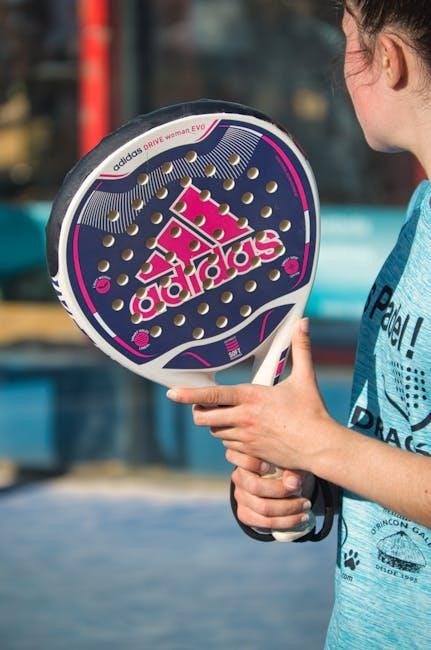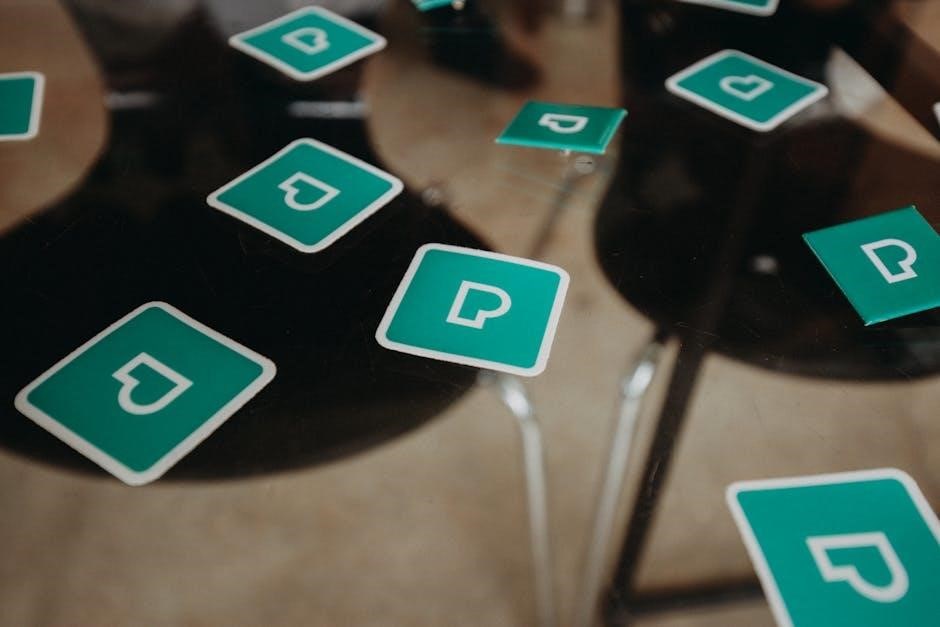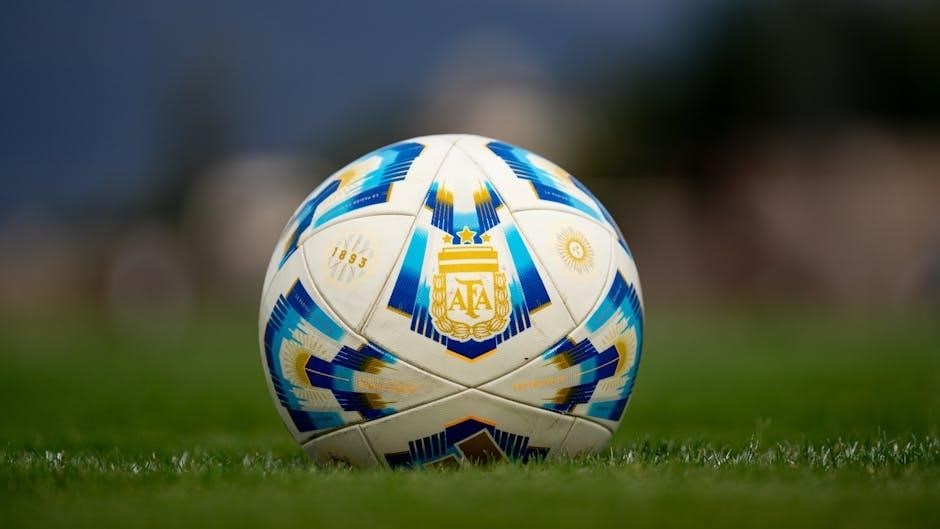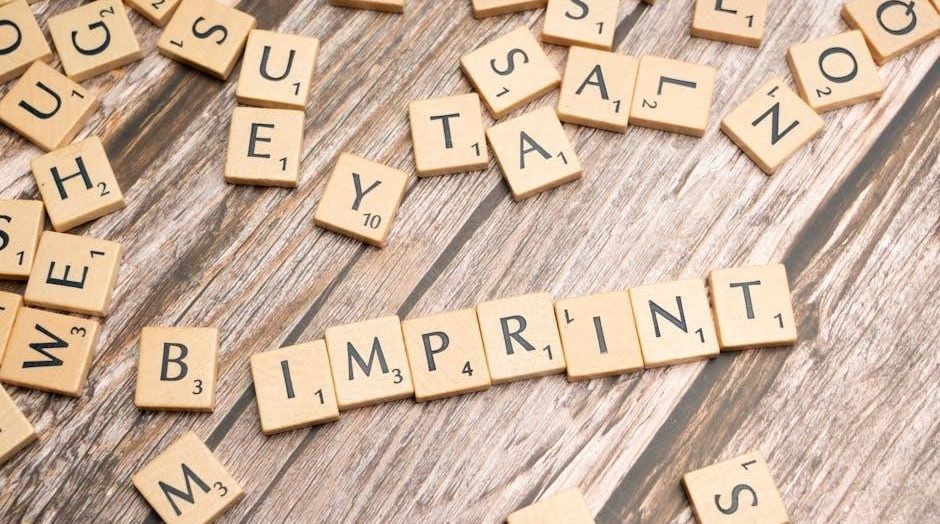Instructions for the Logo Game: A Comprehensive Guide

Unfold the game board and place it on the table. Each player selects a mover and sets it on the START space. The box of Question Cards is placed next to the board; Answer questions about iconic logos correctly to move forward. With each correct answer, the team progresses toward the Winning Zone. The goal is to be the first to reach and answer final questions in the Winning Zone to win the game.
The Logo Game is a fun and engaging board game designed for players of all ages, focusing on brand recognition and trivia. Its objective is to test players’ knowledge of logos, brands, and advertising from various industries. The game is family-friendly, making it a great addition to game nights or casual gatherings. Players are challenged to identify famous logos, answer questions about brands, and even recognize packaging, flavors, or characters associated with well-known companies. The game is simple to understand but exciting to play, appealing to both kids and adults. It typically supports 2 to 6 players and takes about 10 to 20 minutes to play, making it a quick yet entertaining activity. The Logo Game is also educational, helping younger players develop their memory and recognition skills while offering nostalgic value for adults. Its versatility and engaging nature have made it a popular choice for families and casual gamers alike.
Setting Up the Game
Setting up the Logo Game is straightforward and quick, ensuring players can dive into the fun immediately. First, unfold the game board and place it in the center of the table. Each player or team selects a mover and positions it on the designated START space. Next, shuffle the deck of Question Cards and place it within easy reach of all players. If playing with younger participants, consider using the Team Rules to accommodate different skill levels. The game is designed for 2 to 6 players, making it ideal for small or larger groups. Once the board and cards are ready, the game can begin. The setup process is simple, allowing everyone to focus on the exciting gameplay and trivia challenges ahead.
- Unfold the game board and position it on the table.
- Select a mover for each player or team and place it on the START space.
- Prepare the Question Cards and ensure they are accessible to all players.
This quick setup ensures the game is ready to play in minutes, making it perfect for family gatherings or casual get-togethers.
Understanding the Gameplay
The Logo Game revolves around answering questions about iconic logos, brands, and related trivia. Players take turns answering questions correctly to move their piece across the board. The game is divided into colored question categories, with each color representing a different level of difficulty or type of question. When a player lands on a space, they draw a card and attempt to answer the question associated with that space’s color. Correct answers allow the player to advance, while incorrect ones may result in staying in place or even moving backward. The game also features special spaces, such as the “Party Space,” where landing and answering incorrectly allows the next team to take over. The objective is to be the first to reach the “Winning Zone” and correctly answer the final questions to secure victory. Understanding these core mechanics helps players of all ages enjoy the game effectively.
- Answer logo-related questions to progress on the board.
- Correct answers move players forward; incorrect ones may hinder progress.
- Special spaces like the “Party Space” add strategic twists to the game.
The gameplay is designed to be engaging and accessible, making it suitable for both casual and competitive players.
Team Play Rules
The Logo Game can be enjoyed as a team-based activity, making it ideal for groups with a mix of ages and skill levels. Teams work together to answer logo-related questions, fostering collaboration and fun. Each team takes turns answering questions, with the goal of collectively moving their team’s piece toward the Winning Zone. When a team lands on a space, they draw a question card and attempt to answer it. Correct answers advance the team, while incorrect ones may result in staying put or losing a turn. Special rules, such as those for the “Party Space,” add excitement: if a team lands there and answers incorrectly, the next team gets a chance to steal the opportunity. Team play encourages strategic thinking and shared problem-solving, making it a great way to involve everyone in the game. This dynamic ensures that all players, regardless of age or knowledge level, can contribute and enjoy the experience together.
- Teams take turns answering logo questions collaboratively.
- Correct answers move the team forward; incorrect ones may cost a turn.
- Special spaces like the “Party Space” add competitive twists.
Team play rules are designed to maximize engagement and ensure everyone has a chance to participate and win.
Winning the Game
To win the Logo Game, players must reach the Winning Zone and successfully answer the final questions. The first player or team to land on the Winning Zone and correctly answer the required number of questions is declared the winner. The game is designed to test brand recognition and knowledge of logos, making it both challenging and exciting. Players must strategically answer questions to progress through the board and be the first to enter the Winning Zone. If a player lands on the Winning Zone but fails to answer correctly, the next player gets a chance to win. The game emphasizes accuracy and speed, as players race to be the first to achieve victory. Winning requires a combination of knowledge, strategy, and luck, making it a thrilling experience for all participants.
- Reach the Winning Zone first to have a chance to win.
- Correctly answer final questions to secure victory.
- If a player fails, the next player gets an opportunity to win.
Winning the Logo Game is a testament to brand knowledge and quick thinking.
Special Features and Spaces
The Logo Game includes several special features and spaces that add excitement and variety to gameplay. One of the most notable is the Party Space, where all players can participate in a shared challenge. When a player lands on this space, they draw a card and ask a question to the entire group. The first player to answer correctly moves forward, while others may stay or lose a turn. Another unique feature is the Question Card system, which includes color-coded questions categorized by difficulty. Players can also encounter Power Play spaces, allowing them to double their progress or challenge opponents. Additionally, the game includes Speed Round spaces, where players must quickly answer as many questions as possible within a set time. These special elements ensure the game remains dynamic and engaging for all players, combining strategy with fun.

- Party Space: Engage all players with a shared challenge.
- Power Play: Double progress or challenge opponents.
- Speed Round: Answer multiple questions quickly.
- Visual Puzzles: Identify logos, brands, or packaging.
These features make the Logo Game a versatile and entertaining experience for players of all ages.
Expansions and Variations
The Logo Game offers several expansions and variations to enhance gameplay and keep it fresh. The base game can be expanded with additional logo card packs, introducing new brands, characters, and challenges; Themed expansions, such as “Retro Logos” or “International Brands,” add diversity and cater to different player interests. For younger players, a Junior Edition focuses on recognizable logos from cartoons, toys, and kid-friendly brands. A Travel Edition is also available, featuring a compact design for on-the-go play. Additionally, digital versions and mobile apps allow players to enjoy the game virtually, with regular updates adding new logos and features. These expansions and variations ensure the game remains engaging and accessible to a wide range of players, making it a versatile option for family game nights or casual gatherings.
- Logo Card Packs: Add new brands and challenges.
- Themed Expansions: Focus on specific genres or regions.
- Junior Edition: Designed for younger players.
- Travel Edition: Portable and compact.
- Digital Versions: Virtual gameplay with updates.

These options ensure the game stays dynamic and enjoyable for all ages.

Tips for Younger Players
Engaging younger players in the Logo Game can be made enjoyable and educational with a few simple tips. Start by introducing the game with familiar logos, such as cartoon characters or popular toys, to spark their interest. Encourage them to use visual clues, like colors or shapes, to identify logos rather than relying solely on reading skills. For younger children, consider using the Junior Edition, which features kid-friendly brands and simpler questions. Pairing younger players with adults or older siblings can also make the game more collaborative and fun. Additionally, praise their efforts and celebrate correct answers to build confidence. For pre-readers, focus on recognition rather than naming the brand, allowing them to describe the logo or its associated product. These strategies help younger players enjoy the game while developing their brand awareness and critical thinking skills. By adapting the game to their abilities, you can ensure an inclusive and engaging experience for all ages.

- Use familiar logos to spark interest.
- Encourage visual clues for identification.
- Consider the Junior Edition for younger players.
- Pair with older players for collaboration.
- Praise efforts to build confidence.
- Focus on recognition for pre-readers.
These tips make the game accessible and enjoyable for younger participants.
Educational Benefits
The Logo Game offers numerous educational benefits, making it a valuable tool for learning. It enhances memory and visual recognition skills through repeated exposure to various logos and brands. Players develop critical thinking and problem-solving abilities by identifying logos and creating words from letter cards. The game also fosters general knowledge about brands, products, and cultural references, expanding players’ understanding of the commercial world. Additionally, it improves communication and teamwork skills when played in groups, as players discuss and agree on answers. For younger players, versions like “Ready, Set, Count” introduce basic concepts such as counting and matching, aiding early childhood development. The game’s adaptability to different age groups ensures it remains challenging and accessible, providing an optimal learning environment. Overall, the Logo Game is both entertaining and educational, enhancing various cognitive and social skills in a fun and engaging way.
- Enhances memory and visual recognition.
- Develops critical thinking and problem-solving skills.
- Expands general knowledge of brands and products.
- Fosters communication and teamwork.
- Introduces foundational skills for younger players.
These educational benefits make the Logo Game a valuable learning tool.
Party Space Dynamics
The Party Space is a dynamic and exciting feature in the Logo Game, designed to enhance interaction and competition. When a player lands on the Party Space, they draw a card and follow the instructions, which may involve answering additional questions or completing a specific task. All players in the Party Space participate, creating a lively and inclusive atmosphere. If a player fails to answer correctly, they remain in the Party Space, while others continue their turn. The next player to land on the space and answer correctly takes their place, adding an element of strategy and unpredictability. This feature encourages teamwork and healthy competition, making it a highlight of the game; Proper use of the Party Space ensures balanced gameplay and keeps players engaged until the final moments. Understanding its rules is crucial for maximizing enjoyment and ensuring fair play for all participants. The Party Space Dynamics add a unique twist to the game, making it memorable and entertaining.
Strategy and Tricks
Mastering the Logo Game requires a combination of brand knowledge and strategic thinking. One effective strategy is to focus on common brands and logos, as they appear more frequently. Players should also leverage their personal strengths, such as familiarity with specific industries or retro brands. Team play allows for collaboration, so dividing tasks based on expertise can maximize correct answers. When landing on the Party Space, carefully consider risks and rewards, as missing a question can cost valuable progress. Another trick is to pay attention to logo details, as subtle differences can identify the correct brand. Time management is crucial, especially in timed rounds, so quick decision-making is key. Additionally, guessing strategically, even when unsure, can sometimes yield correct answers. Lastly, staying observant and adapting to the game’s flow helps maintain momentum. By combining these strategies, players can enhance their chances of winning and enjoying the game more thoroughly. Properly executed, these tactics make the Logo Game both challenging and rewarding for all participants.
Frequently Asked Questions
How many players can play the Logo Game?
The Logo Game is designed for 2 to 6 players, making it ideal for both small and larger groups.

What is the recommended age range for players?
The game is suitable for players aged 3 and above, with team rules helping to accommodate younger participants effectively.

How long does a typical game take to play?
Games usually last between 10 to 20 minutes, depending on the number of players and their familiarity with the logos.
Can the game be played individually or only in teams?
The Logo Game can be played both individually and in teams, with team rules offering a flexible option for mixed-age groups.
Are there any expansions or variations available?
Yes, expansions and variations exist, such as themed editions or additional card packs, to keep the game fresh and exciting for repeat players.

What if a player lands on the Party Space and misses a question?
If a player or team lands on the Party Space and misses, the next team to enter the space has a chance to win by answering correctly.

These questions address common inquiries about gameplay, setup, and rules, ensuring a smooth experience for all players.
